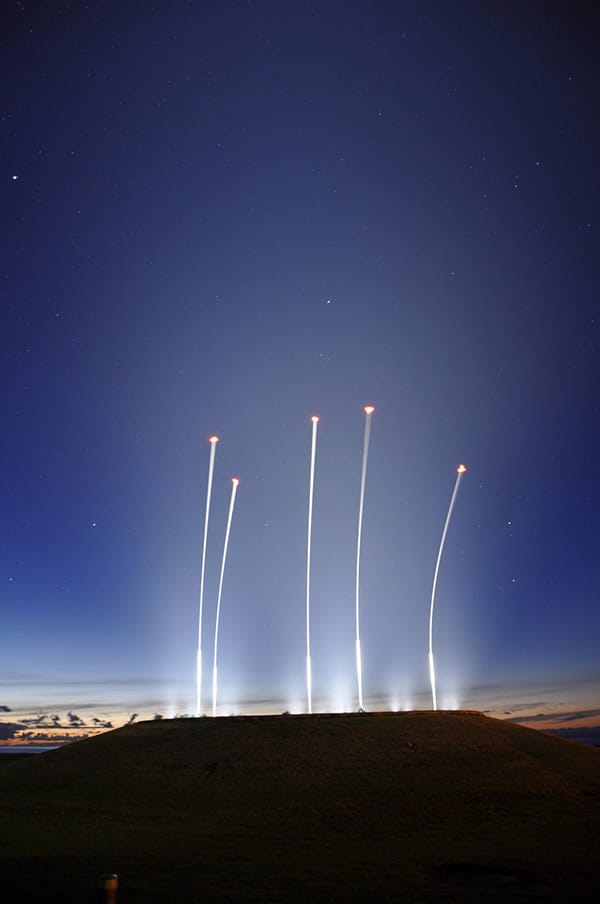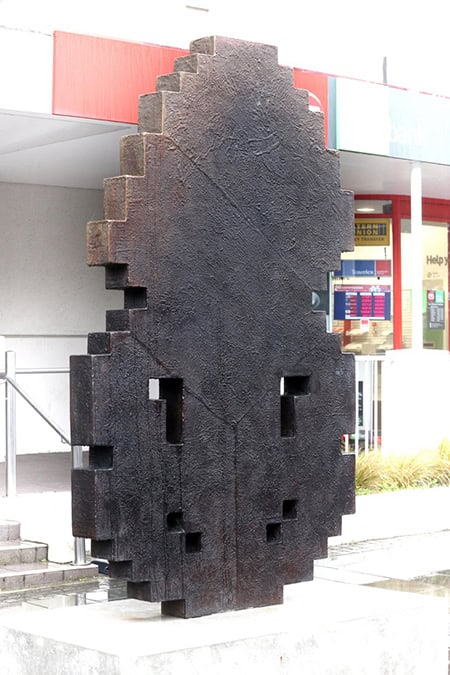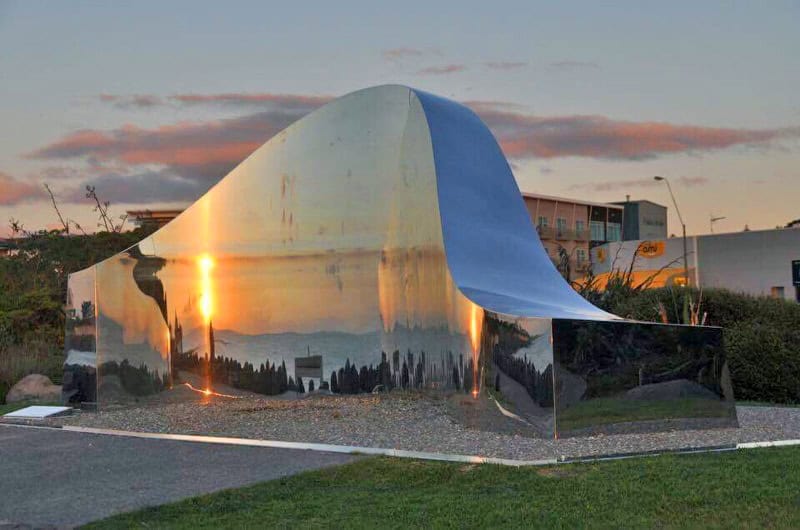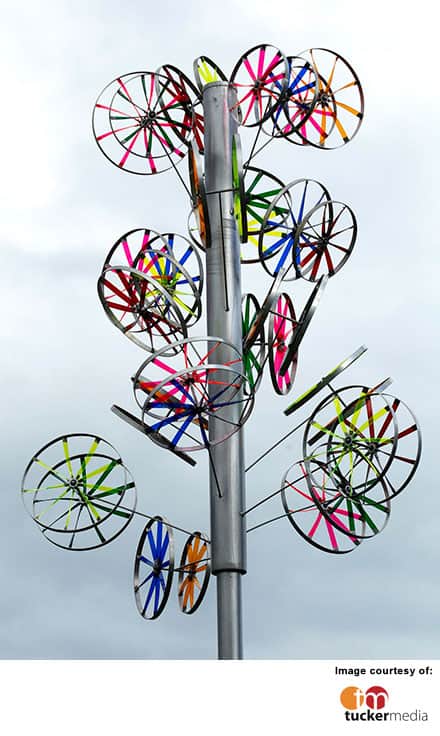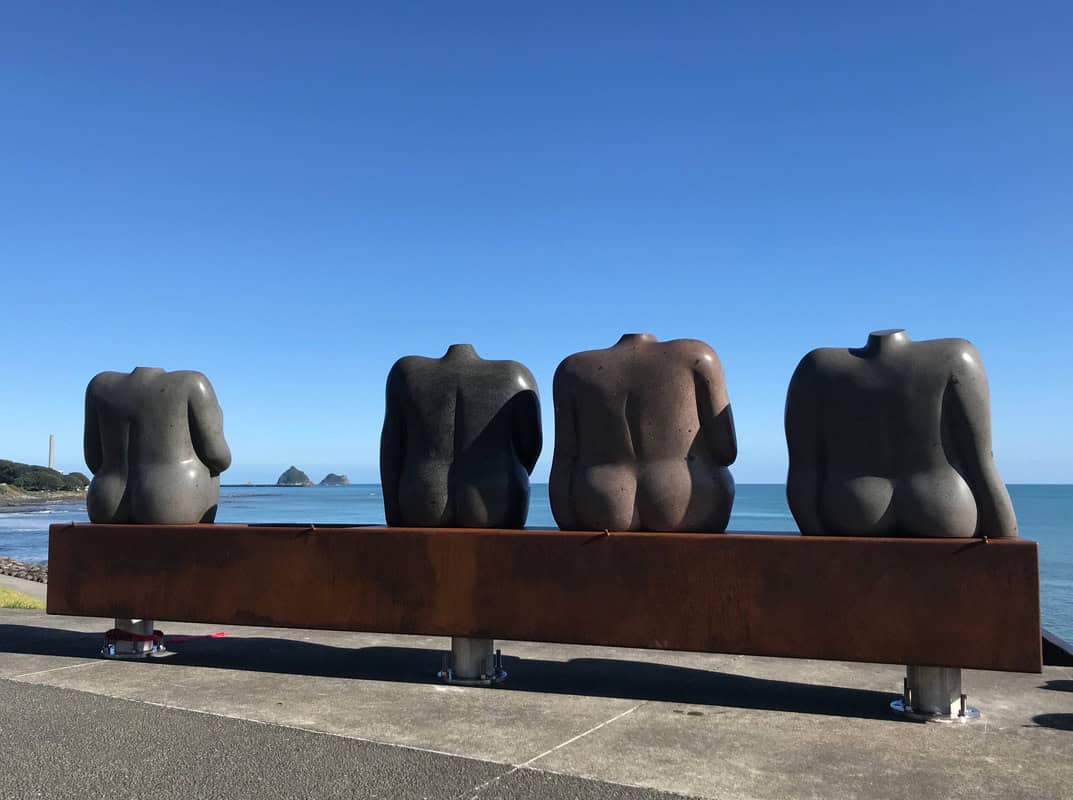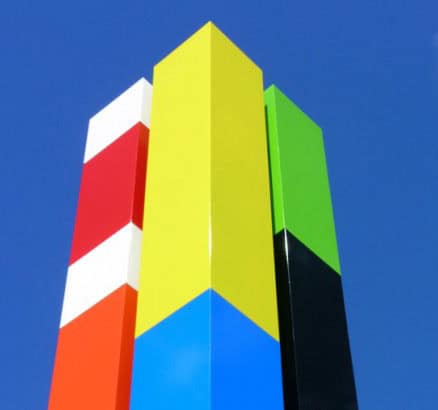
Michael Parekowhai
This powder-coated aluminium sculpture, created in 2003, was installed in the lower Brougham Street redevelopment in March 2013. The work refers to the Te Ataarangi system of Māori language teaching. This was devised by Katerina te Heikoko Mataira and Ngoingoi Pewhairangi using Cuisenaire rods originally developed by Belgian teacher, Georges Cuisinaire, for teaching mathematics to children.
The Te Ataarangi system uses the rods as an integral part of a dynamic, total immersion classroom experience in which participants are encouraged to speak only Māori as they handle and exchange the different coloured rods.
The sculpture is a tribute to the success of Te Ataarangi and a monument to the renaissance of Te Reo. It is also a reminder of the fun method of maths learning that many New Zealanders experienced at primary school.
Parekowhai is one of our most important contemporary artists. His work has been included in many important exhibitions, including the Venice Biennale (2011), Asia-Pacific Triennial (2006-2007), Gwangju Biennale (2004) and the Biennale of Sydney (2002). His work is held in significant public and private collections throughout New Zealand and Australia, as well as in several notable collections globally.
In his works Parekowhai plays with ideas of camaraderie, tools of teaching and learning, as well as quotations from modern art history and popular culture. His work has been described as emphasising the extraordinariness of the ordinary.
Born in Porirua, Parekowhai is of Māori (Ngati Whakarongo) and Pakeha descent. He holds a Master of Fine Arts degree from Elam School of Fine Arts, University of Auckland, where he is now Associate Professor of Fine Arts. In 2001 he was awarded an Art Foundation of New Zealand Laureate.
The cost of the sculpture, including installation, was $70,000.

